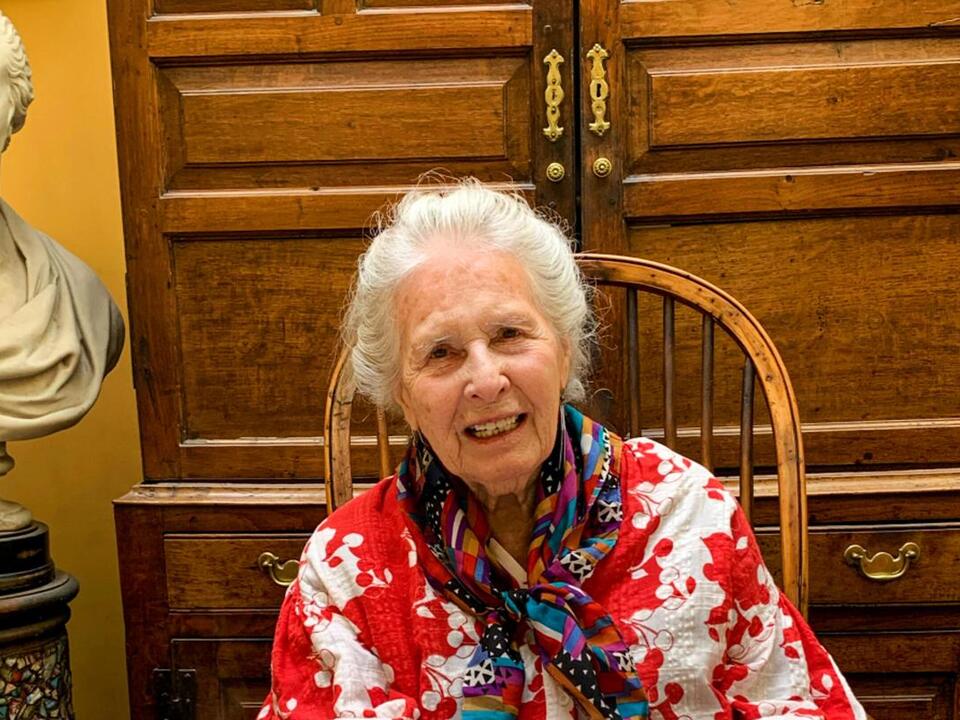Physical Address
304 North Cardinal St.
Dorchester Center, MA 02124
Physical Address
304 North Cardinal St.
Dorchester Center, MA 02124

It’s now fashionable in retail to use “curate” to suggest superior pre-selection of goods to lay before languid customers, but Gretchen Andersen was an actual curator – she knew about and very much cared for things, and shared her enthusiasm with anybody. So her unsmart small shop, the Lacquer Chest in Kensington Church Street, London, which she kept for 66 years, influenced the taste of tastemakers.
Andersen, who has died aged 94, and her husband Vivian, took the business over in 1957 from his mother, Esme, who had opened it early in the 1950s. They turned it away from formal antiques. Since the 20s, artists had collected not drawing-room-mantlepiece contents, but vernacular and folk arts and crafts, purposeful items from kitchens and garden sheds, ethnic textiles, popular prints, and all that the industrial Potteries could mould and paint. The second world war’s disruptions, and its impoverished aftermath, then caused a domestic downsizing in the UK that released hoards of such treasures from town houses split into flats, country houses sold, a middle class no longer with servants to cook and clean. Two centuries’ worth of it submerged suburban junk shops, local auctioneers, and depositories’ sales yards.
The Andersens were among, and understood, a new generation of customers for this trove, who had no interest in an item’s significance or importance but, as the artists had, liked it for its amusing quality, or as potential set-dressing for scenes in their lifestyle. So the couple, he an engineer with Ove Arup, she a primary school teacher who studied ceramics, put their entire £300 capital into the Lacquer Chest (annual rent £125).
Their operating principle was that the past was a foreign country that had produced many wonderful goods; they would be the importers. Both had sophisticated eyes for things that remained rewarding no matter how currently out of favour. He made regular rounds of outer London junk shops; she put their weary car on a train to Perth every month to drive round Highland stuff clearances, and weekly scavenged the West Country and Cotswolds before new main roads were constructed. She bought and sold twice as much as he did: he enjoyed tinkering and upgrading.
They were in the right location – Church Street joined messy Notting Hill, close to the dealers’ HQ around Portobello Market, with what became by the late 60s the cool end of Kensington High Street. And at the right time, when pioneer gentrifiers were eager for supplies of the eclectic. Alan Bennett came by early. Student David Hockney looked for useful furniture. Terence Conran wanted unusual chairs as inspiration for his designs. The decorating firm of Colefax and Fowler checked her stock weekly for decades. Along Church Street, retail went up in the world – so many chandeliers! – to match property values, but the Chest’s own interior stayed the unpretentious same, down to the industrial metal shelving.
Andersen did discover that customer tastes changed, even in goods from the past – the Great Kitchen Dresser Revival period that had showcased so many, so varied, ceramics, right down to eggcups, ebbed in the mid-80s, and minimalism brutally decluttered interiors.
In 1963, Andersen had loaned Vogue magazine furniture for a shoot, and House & Garden borrowed props for sets. So she established a hire department – things bought because she liked them, and didn’t want to part with them: “What I wanted to keep were the rare things, but what people wanted to hire were the not-so-rare things.” And often what wouldn’t sell, would hire. The Chest became a reliable stylists’ resource for objects to star in commercials, photography for food books, and period television series and films, including Gosford Park (2001).
In the Andersen’s own house, some things were forever keepers (irrelevant whether they had cost seven shillings and sixpence or £76, and would fetch far more), others flowed through home, hire, and shop. At Vivian’s suggestion, pictures on their own walls were sold whenever they had a repaint.
The couple had met in London because he stopped to help her when an old taxi – which she had bought for £50 – broke down; they went on to a nightclub together. She had come to London in 1949 from South Africa, where she was born, the daughter of Oma (nee Froom) and Cyril Scholz, a lawyer, and had studied English at the University of the Witwatersrand, Johannesburg, at the remarkable age of 15. In the winter of 1949 she had been a passenger in a car that crashed en route to a skiing holiday in the French Alps. Her legs were seriously injured, needing repeated surgeries, and she found walking difficult all her life: only in her 80s did she use sticks – by then she had a collection of fine old examples.
Vivian died in 2011. She is survived by their children, Ben, Toby, and Emily. The shop remains in the family and is still open.
• Gretchen Andersen, collector and antique shop proprietor, born 5 November 1929; died 17 June 2024
Source: The Guardian



